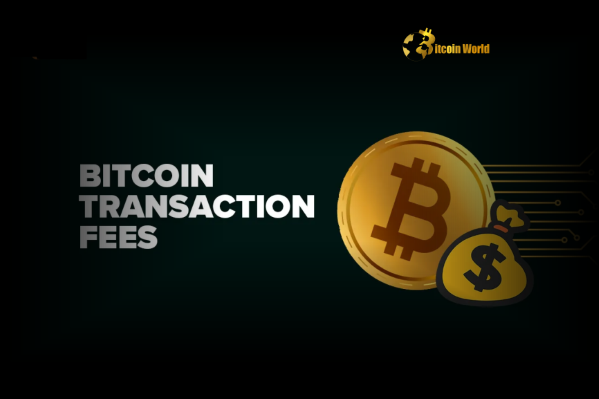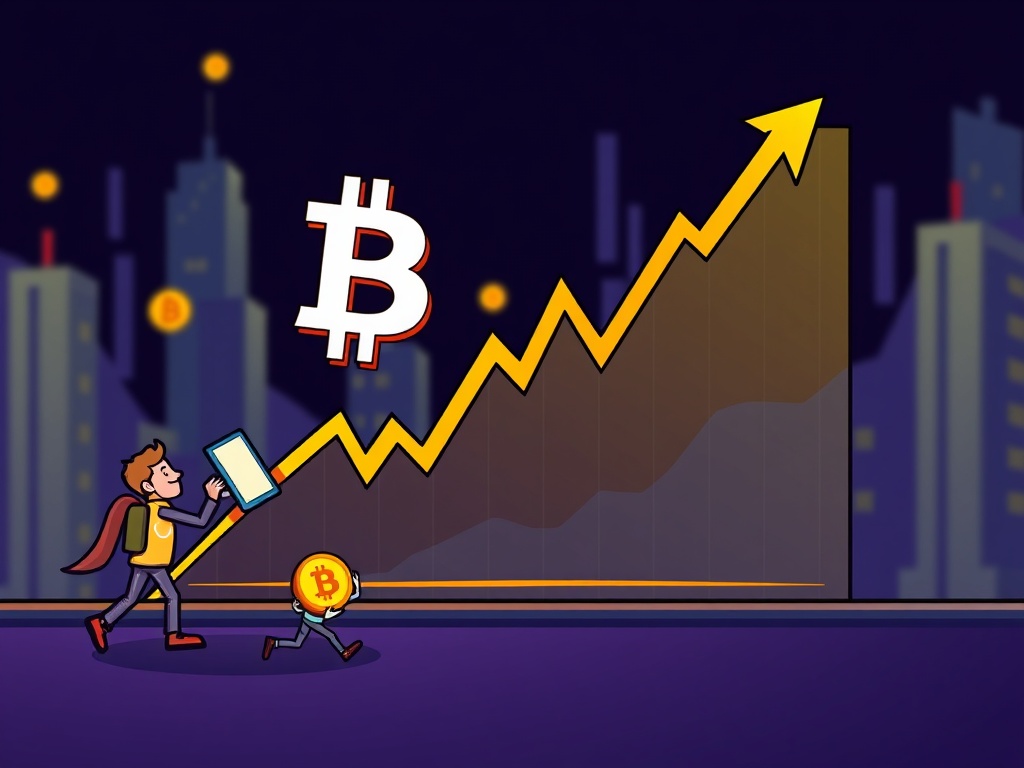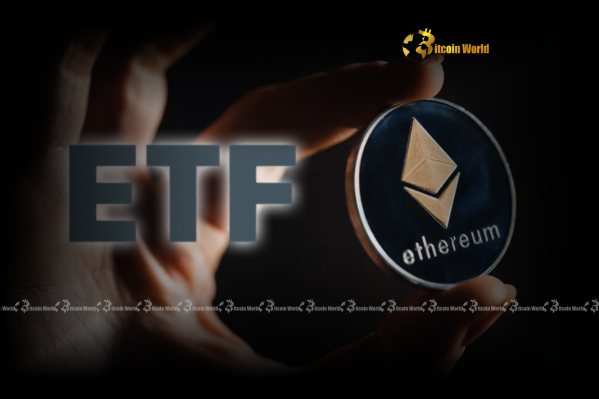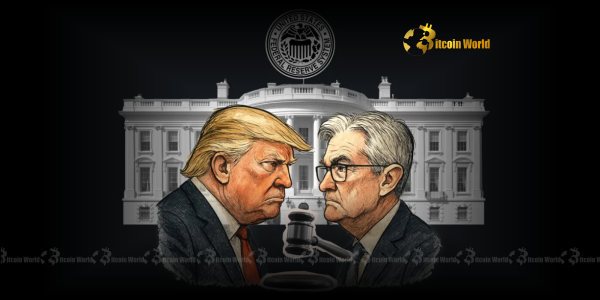BitcoinWorld

Bitcoin Transaction Fee: Astonishing 1 BTC Paid in Single Transaction
Imagine sending a Bitcoin transaction and paying a fee equivalent to the value of one whole Bitcoin. That’s exactly what happened recently on the Bitcoin network, leaving many in the crypto community buzzing. According to data from the popular Bitcoin explorer Mempool, a single transaction incurred an unusually high fee of 1 BTC.
This particular transaction was confirmed approximately 30 minutes ago within block 897,818. While the value being transferred wasn’t immediately clear, the sheer size of the fee is what grabbed attention. In a world where average Bitcoin transaction fee costs are often measured in dollars or tens of dollars, a 1 BTC fee stands out dramatically.
Understanding Bitcoin Transaction Fees: Why Do We Pay?
Before diving deeper into this specific, eye-watering high Bitcoin fee, let’s quickly recap why transaction fees exist on the Bitcoin network in the first place. Unlike traditional payment systems where fees might go to banks or credit card companies, Bitcoin fees are paid to the miners who process and validate transactions.
- Incentive for Miners: Fees reward miners for expending computational power to secure the network and confirm transactions, ensuring they continue their work.
- Spam Prevention: Fees make it costly for malicious actors to flood the network with tiny, pointless transactions, helping to keep the Bitcoin mempool manageable.
- Prioritization: When the network is busy, transactions offering higher fees are typically prioritized by miners, leading to faster confirmation times.
So, fees are a fundamental part of Bitcoin’s design, but how are they determined, and why would someone pay 1 BTC?
Navigating the Bitcoin Mempool: How Fees Are Calculated
The cost of a Bitcoin transaction fee isn’t fixed. It’s primarily influenced by several factors, creating a dynamic market for block space:
- Transaction Size: Fees are calculated based on the size of the transaction data in bytes, not the amount of Bitcoin being sent. Complex transactions (like those involving multiple inputs and outputs) are larger and cost more.
- Network Congestion: When many people are trying to send transactions simultaneously, demand for limited block space increases. This drives up the ‘satoshis per byte’ rate that users must offer to get their transaction included in a block quickly. This is where the Bitcoin mempool comes in – it’s like a waiting area for unconfirmed transactions.
- Miner Priority: Miners generally pick transactions from the Bitcoin mempool that offer the highest fee rate (satoshi per byte) to maximize their revenue.
Given this, a 1 BTC fee suggests either an extreme level of urgency, an error, or a transaction with unique characteristics.
Why Such a High Bitcoin Fee? Exploring the Possibilities
A 1 BTC fee is exceptionally rare. To put it in perspective, as of this writing, 1 BTC is a significant amount of money, vastly exceeding the typical fee required for even the most urgent transaction. Several theories could explain this astonishingly high Bitcoin fee:
- User Error: The most common explanation for such anomalies is a simple mistake. The sender might have accidentally entered the amount they were sending into the fee field, or perhaps a poorly configured wallet software calculated the fee incorrectly. This is a significant risk when dealing with crypto fees.
- Deliberate High Priority: While unlikely to require 1 BTC, the sender might have needed the transaction confirmed instantly, regardless of cost. However, typical fees for rapid confirmation are orders of magnitude lower.
- Testing or Research: Someone might deliberately pay a very high fee for testing purposes, perhaps related to network behavior, miner response, or specific transaction types.
- Privacy or Obfuscation: In rare cases, extremely high fees might be paid as part of a complex privacy strategy, though this is less common and less convincing than the error hypothesis.
- Wallet Software Glitch: Less likely, but a bug in the wallet software used could potentially lead to an erroneous fee calculation and submission.
Without direct information from the sender, the exact reason remains speculative, but user error is historically the most frequent cause of such massive fee outliers on the Bitcoin network.
Impact on the Bitcoin Network and Miners
While a 1 BTC fee is detrimental to the sender (assuming it was an error), it’s a significant windfall for the miner who included the transaction in their block. Block 897,818’s miner received this substantial bonus on top of the standard block reward and other transaction fees.
- Miner Revenue Boost: This single fee dramatically increased the revenue for the miner of block 897,818.
- No Systemic Impact: While notable, one high fee transaction doesn’t fundamentally alter the economics or security of the entire Bitcoin network. It’s an anomaly rather than a trend.
- Highlights Fee Volatility: Such events serve as a stark reminder of the potential volatility and unpredictability of crypto fees, especially during periods of high network activity.
Avoiding High Bitcoin Fee Payments: Actionable Insights
For regular users, paying an exorbitant Bitcoin transaction fee is a nightmare scenario. Here are some actionable tips to help avoid accidentally overpaying:
1. Use Reliable Wallet Software: Ensure your wallet software is up-to-date and from a reputable source. Good wallets provide clear fee estimations and allow you to adjust fees.
2. Check the Bitcoin Mempool: Before sending, check a reliable mempool explorer (like mempool.space) to see the current network congestion and recommended fee rates for different confirmation speeds. This helps you gauge a reasonable Bitcoin transaction fee.
3. Understand Fee Estimation: Most wallets offer fee estimations (e.g., ‘fast’, ‘medium’, ‘slow’). Understand what these mean in terms of confirmation time and cost. Don’t blindly accept the highest suggestion unless urgency is critical.
4. Consider Transaction Batching: If you need to send multiple transactions, some wallets allow you to batch them, which can be more fee-efficient.
5. Learn About SegWit: Ensure your wallet uses SegWit addresses (starting with ‘bc1’). SegWit transactions are smaller in size, leading to lower crypto fees.
6. Double-Check Everything: Before confirming any transaction, especially one involving a significant amount, carefully review the recipient address, the amount being sent, and the fee being charged. This is the most crucial step to prevent errors like the one that led to this high Bitcoin fee.
The Challenge of Crypto Fees
While the 1 BTC fee is an extreme case, managing crypto fees remains a challenge for users across various networks, not just Bitcoin. Fee volatility, especially during bull markets or periods of high network demand, can make small transactions uneconomical and impact the user experience. Projects are constantly working on scaling solutions (like the Lightning Network for Bitcoin) to reduce reliance on high on-chain fees for everyday transactions.
Conclusion: A Costly Lesson on the Bitcoin Network
The recent 1 BTC transaction fee serves as a dramatic, albeit rare, example of what can happen with Bitcoin transaction fee calculation. It highlights the importance of understanding how fees work, monitoring network conditions via the Bitcoin mempool, and using reliable tools to manage your transactions safely. While beneficial for the fortunate miner, this astonishingly high Bitcoin fee is likely a very expensive lesson for the sender. As the crypto space evolves, improving fee predictability and efficiency remains a key area of focus for enhancing the user experience on the Bitcoin network and beyond.
To learn more about the latest Bitcoin trends and transaction fee dynamics, explore our articles on key developments shaping Bitcoin price action and network activity.
This post Bitcoin Transaction Fee: Astonishing 1 BTC Paid in Single Transaction first appeared on BitcoinWorld and is written by Editorial Team





